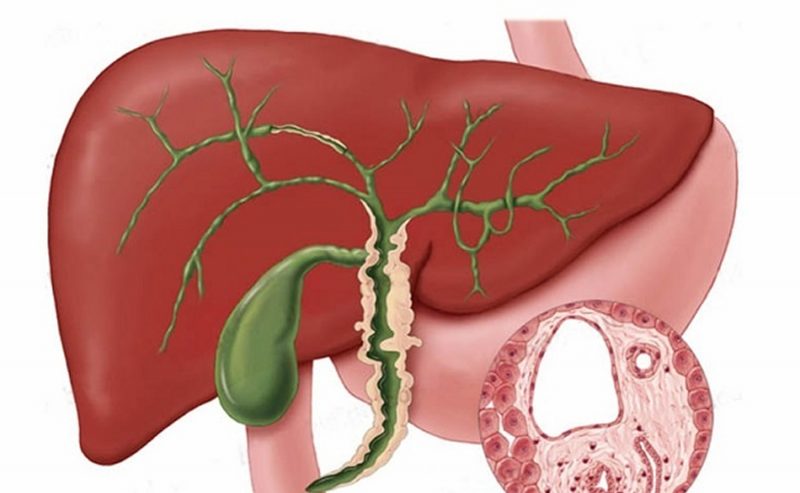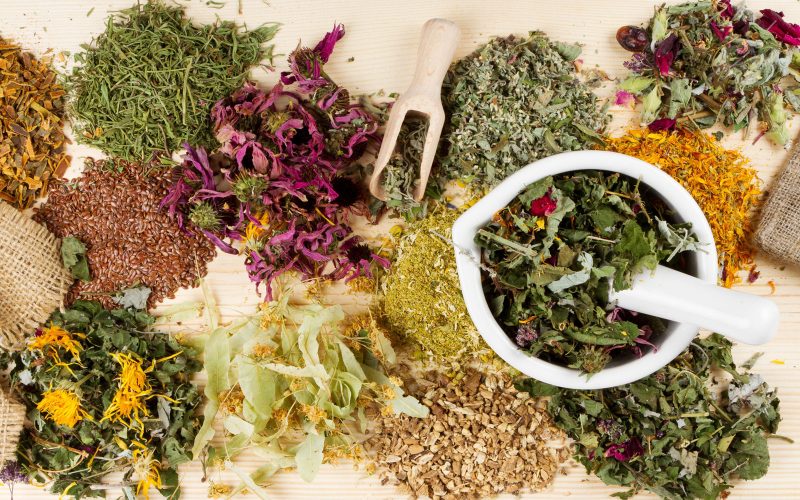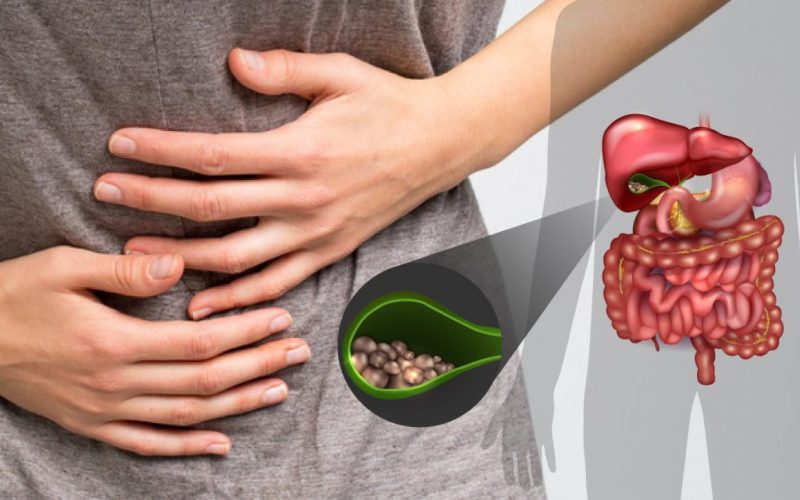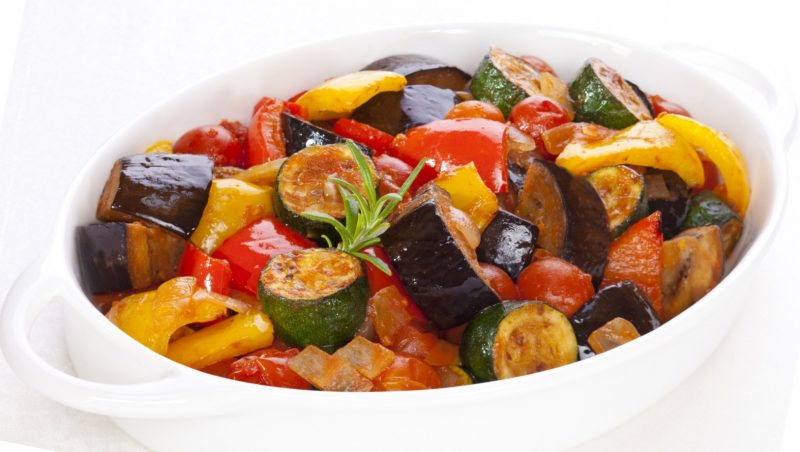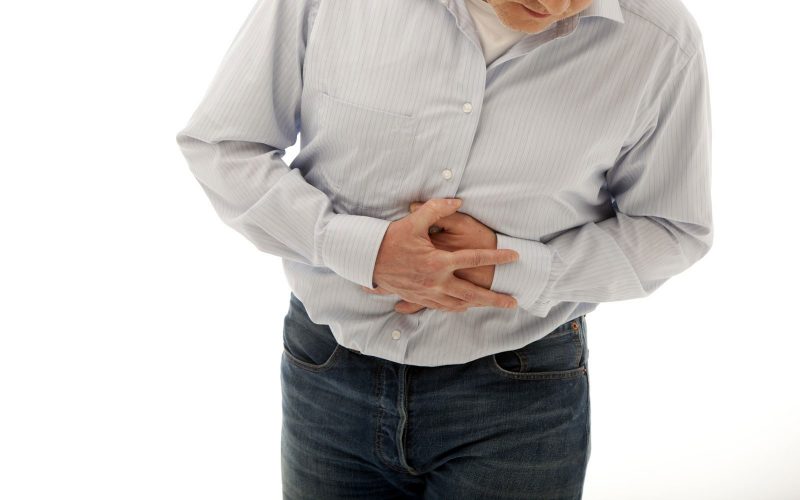Cholecystitis is an inflammatory process of the gallbladder, which is characterized by wave-like symptoms. The stage of exacerbation may occur as a result of stress, errors in the diet. This article details the symptoms and treatment of cholecystitis in adults.
Material Content:
- 1 Risk groups and causes of cholecystitis
- 2 Disease classification
- 3 Symptoms and clinical presentation
- 4 Diagnostic measures
- 5 Treatment of chronic and acute forms of the disease in adults
- 6 Manifestations during pregnancy
- 7 Proper nutrition for cholecystitis
- 8 Possible consequences
- 9 Preventative measures
Risk groups and causes of cholecystitis
Most often, cholecystitis occurs for the following reasons:
- With diagnosed biliary dyskinesia. As a result of this disease, stagnation of bile occurs, which does not receive a natural outlet.
- Due to pregnancy. During this period, an increase in the uterus occurs. The organs of the abdominal cavity, including the gall bladder, experience increased pressure. Thus, the functioning of the organ is disrupted.
- ZhKB. With this disease, stones do not give free exit of bile;
- Improperly organized nutrition process, as a result of which there is inflammation of the organ due to excessive load.
- Congenital deformity of the gallbladder.
- Parasitic lesions of the gastrointestinal tract.
- Injuries to the abdominal cavity.
- Predisposition to constipation.
The cholecystitis risk group includes the following categories:
- women taking hormonal contraceptives;
- people over the age of 40;
- persons with burdened heredity for this disease;
- obese people;
- people eating high-fat, fatty foods;
- patients with diabetes;
- people who, as a result of fasting, quickly lose body weight.
Typically, cholecystitis occurs due to an improper lifestyle, "bad" nutrition.
Disease classification
Several classifications of cholecystitis are known.
Based on the duration of the disease, the following types of disease are determined:
- acute cholecystitis usually leads to recovery, does not give complications, pathology occurs against the background of cholelithiasis;
- chronic cholecystitis is characterized by a slow course, usually does not have vivid symptoms.
In addition, there are the following types of cholecystitis:
- With the formation of stones. This cholecystitis occurs most often.
- Without the formation of stones. This type of disease is quite rare.
People who are under 30 years old usually suffer from stoneless cholecystitis. At an older age, the likelihood of calculous cholecystitis increases.
By the nature of the disease can be:
- purulent;
- mixed;
- catarrhal;
- phlegmonous;
- gangrenous.
The classification of the disease according to the severity of the pathology is also known:
- Easy. It is characterized by a weak pain syndrome, its self-control, the absence of digestive disorders. Mild cholecystitis is manifested no more than 2 times per year, does not lead to impaired functioning of other organs.
- Medium. This type is accompanied by persistent pain, pronounced digestive disorders. The disease occurs up to 3 times per year, leading to impaired liver function.
- Heavy. This type is characterized by prolonged bright pain, digestive disorders. The disease proceeds with frequent relapses, often entails pancreatitis.
Adequate treatment can be prescribed only with an accurate diagnosis of the type of cholecystitis.
Symptoms and clinical presentation
The main symptom of acute cholecystitis is pain in the hypochondrium on the right. Moreover, the pain syndrome intensifies if a person changes the location of the body.
Sometimes pain gives to the neck, shoulder blade, shoulder on the right side. After some time, unpleasant symptoms can stop on their own. Further it becomes brighter and more constant.
Acute cholecystitis can be determined by the following clinical picture:
- dull pain on the right;
- poor appetite or lack thereof;
- indigestion;
- persistent nausea;
- bitter belching;
- fever;
- icteric color of the skin.
Symptoms of chronic cholecystitis are:
- digestion disorder;
- pain on the right side, extending to the back;
- the presence of bitterness in the mouth;
- bitter belching;
- yellowish shade of mucous membranes, skin.
Cholecystitis is characterized by an attack, which is determined by the following clinical picture:
- acute pain in the right hypochondrium;
- a yellowish tint of the skin;
- the appearance of vomiting after eating;
- sharp weakness;
- lowering blood pressure;
- heart palpitations;
- taste of acute bitterness in the mouth.
Multiple manifestations of attacks of cholecystitis characterize the disease as chronic. This species can have a calculous nature, and the absence of gallstones. Chronic cholecystitis sometimes develops imperceptibly, over several years. A chronic disease is sometimes diagnosed after acute gallbladder inflammation.
Diagnostic measures
Before treating cholecystitis, a diagnosis is needed that begins with a visit to a gastroenterologist. After talking with the patient, the doctor establishes the alleged diagnosis.
To determine the type of cholecystitis, the following diagnostic procedures are necessary:
- Ultrasound of the abdominal cavity, during which special attention is paid to determining the thickness of the walls of the gallbladder, the presence of inclusions, deformations.
- Duodenal sounding.This method allows you to determine the presence of bacteria, their sensitivity to antibacterial agents, the density of bile.
- Cholecystocholangiography. This procedure provides complete information about the functioning of the body.
- KLA, which allows you to determine the presence of an inflammatory process.
- A biochemical blood test that allows you to evaluate liver tests.
- In acute cases, diagnostic laparoscopy may be required.
Diagnosis allows you to distinguish an attack of cholecystitis from a gastrointestinal ulcer, an attack of the liver, kidneys.
Important! Treatment of acute cholecystitis is carried out with painkillers, antispasmodics.
Treatment of chronic and acute forms of the disease in adults
Treatment of gallbladder inflammation is complex. Therapy of acute cholecystitis, the removal of an attack should be carried out in a hospital. In case of acute need, surgical intervention is indicated.
Drug treatment
Medications are selected, the duration of their intake and the dose by the doctor, based on the type of cholecystitis, its nature, age and condition of the patient.
After removing the acute stage with painkillers, the following groups of medications are required:
- anti-inflammatory ("Diclofenac");
- antispasmodics (No-shpa, Papaverin, Baralgin);
- choleretic ("Hepabene", "Allohol");
- stimulating the elimination of bile ("Sorbitol", "Platifillin");
- antibiotics (Ciprofloxacin, Levofloxacin);
- nitrofurans may be included in addition to antibacterial drugs (Furadonin, Furazolidone);
- to improve the functioning of the gallbladder ("Cerucal", "Motilium").
At the same time as medication, a tube with a choleretic drug dissolved in mineral water is prescribed.
Note. Treatment of chronic cholecystitis is carried out with the help of drugs that improve the synthesis and outflow of bile.
Folk recipes
Alternative medicine is used only for the treatment of chronic cholecystitis. Using unconventional methods to relieve the acute stage is prohibited. All folk remedies can be applied only in a complex to medications and after consulting a doctor.
To alleviate the condition and improve the outflow of bile, decoctions, infusions from the following medicinal herbs are used:
- parsley;
- flax seeds;
- yarrow;
- immortelle;
- plantain;
- calamus root;
- corn stigmas;
- fennel.
Note. After alleviating the condition, herbal infusions can be used up to six months. They will reduce the number of relapses, extend the period of remission.
Manifestations during pregnancy
Often, cholecystitis manifests itself in pregnant women. This is due to pressure on the gallbladder of the growing uterus, increased synthesis of progesterone. This hormone is responsible for the work of the gallbladder. Usually, the disease is not dangerous for the woman and the fetus. In exceptional cases, attacks may occur that are the reason for the speedy hospitalization.
Proper nutrition for cholecystitis
The most important role in the treatment of cholecystitis is diet. During the relief of pain, the patient is prescribed fasting, which is combined with the use of sweet tea, broth of wild rose, freshly prepared juices, mineral water with released gases. Gradually, mashed soup, cereals, crackers, low-fat cottage cheese, meat, fish are added to the food.
All food should be mashed. An important principle is fractional and frequent nutrition.
Patients with cholecystitis should:
- stewed, steamed food, it is necessary to exclude fried foods;
- steam cutlets, meat soufflé, only lean meat, poultry with removed skin, tendons are allowed;
- shredded vegetables;
- boiled porridge;
- vegetable fats;
- a small amount of butter;
- restriction of baking, milk;
- salt restriction;
- food should be at room temperature.
It is recommended to eat at the same time to bring the outflow of bile back to normal.
Possible consequences
If you do not pay attention to the symptoms of cholecystitis in a timely manner, do not start treatment, then the following complications may develop:
- cholangitis;
- pancreatitis
- hepatitis A;
- ZhKB;
- polyposis;
- cholestasis;
- dropsy of the gallbladder;
- organ perforation.
A common complication is the formation of pus, which is localized in the liver.
Preventative measures
Prevention of the development of cholecystitis is possible subject to the following simple recommendations:
- proper nutrition;
- normalization of weight;
- timely rehabilitation of the oral cavity;
- annual medical examination;
- maintaining a healthy lifestyle;
- daily walks in the fresh air;
- the exception of any alcohol.
If a person has already been diagnosed with cholecystitis, then a regular examination by a doctor, compliance with all his recommendations, and an annual examination will be considered prevention.
Cholecystitis is a serious disease that, when consulted with a doctor at the initial stage and regular treatment, gives rather positive prognoses.



